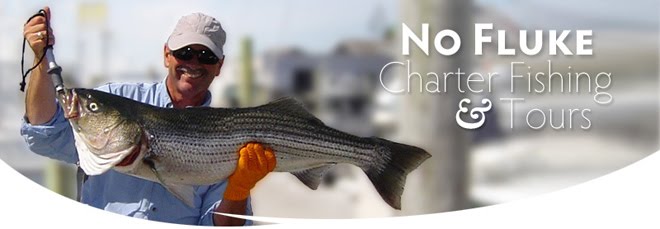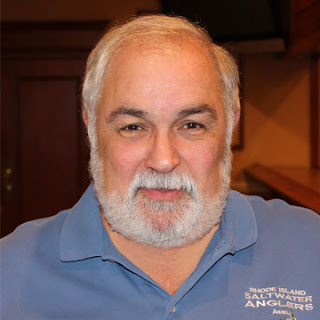Pam Tameo, West Bay Anglers
fundraising chair, with one of the Lobster Raffle prizes. The fishing club raised over $12,000 this
winter for the Impossible Dream and their ‘Take a kid fishing’ Foundation.
Quahogs and quahogers honored
Ah, the cherished Rhode Island
quahog. It was recognized this week
along with the shellfishermen and women that harvest them when Governor Gina
Raimondo declared March 21-27, 2016 Quahog Week in Rhode Island. The Governor joined state and food-industry
leaders at a special celebration at Save the Bay Tuesday to mark the quahog
industry’s importance to the state’s history, culture and economy and to encourage
its year-round use.
Over 27 million quahogs were harvested
form Narragansett Bay and Rhode Island coastal waters last year. Throughout Quahog
Week sixteen restaurants across the state will offer special menu selections
that will feature the native Rhode Island clam. Visit www.seafoodri.com for details on Quahog Week, a list of
participating restaurants and information about the RI Seafood brand.
West Bay Anglers donate $12,000 to non-profits
The West Bay Anglers, a fishing
club located in Warwick, RI contributed $6,000 to Impossible Dream Saturday and
$6,000 to their ‘Take a Kid Fishing’ Foundation. The Foundation funds will be used to take
over 300 children fishing on six separate fishing trips this summer on the
Seven B’s party boat out of Galilee, RI.
Pam Tameo, lobster raffle
chairperson and past president of the West Bay anglers said, “Our supporters
were great this year allowing us to raise over $12,000. And I have to thank the Warwick Firefighter’s
Hall as they were outstanding setting up the hall and preparing food for each
of the fourteen Saturday Lobster Raffle events we held there this year.”
Each week the West Bay Anglers
would raffle off tables and tables of food, consumer electronics, fishing gear
and a host of other items. Each Saturday
event would last over two hours.
Traditionally, they were held at the FOP Lodge, however, due to Apponaug
construction and difficult access, the venue was moved to the Firefighter’s
Hall in Warwick this year.
Tameo said, “On all six fishing
trips we will give priority to the children of military families and then focus
on other children in need. We already
have a waiting list for trips this summer.”
For information about the fishing
trips and raffles contact Pam Tameo at wbapamtam@cox.net.
Kayak fishing is hot
Kayak fishing is the fastest growing sector
in the industry and fishermen in Rhode Island are no exception. In fact, a new organization called Ocean
State Kayak Fishing (OSKF) formed last year and has really taken off. OSKF was started with a handful of
fishing buddies to communicate and plan fishing trips. The group now
serves as a place for people to find new fishing partners, post photos and ask
questions.
OSKF has a YouTube page with videos of
fishing trips, reviews and helpful do it yourself videos. The goal of the organization is to be a one stop shop for all
kayak fishing information and does not have a membership fee.
OSKF has a season long striped bass tournament for
the largest striped bass. For
information visit their website at www.oceanstatekayakfishing.com
.
Hats off to charter fishing industry
Hats off to Capt. Rick Bellavance, president of the
Rhode Island Party & Charter Boat Association and some of his fellow
association members (I am happy to be one of them) that pioneered the
electronic recording of fishing catch and effort on charter boats as part of a
pilot project they ran for two years.
Last year Capt. Bellavance and his colleagues worked with software
developers to perfect the application making it work to satisfy NOAA’s criteria
for mandatory Vessel Trip Reporting (VTR) that charter boat and commercial
fishing vessels with federal fishing licenses must complete on each fishing
trip.
The software has
been approved for use by NOAA’s Greater Atlantic Region by the Atlantic Coastal
Cooperative Statistical Program (ACCSP) as a mobile electronic vessel trip
reporting (eVTR) application for the purpose of eVTR submission to the Greater
Atlantic Region.
This development is big in that it will provide federal and state fish
managers with a reliable and robust electronic data source to calculate fishing
activing for commercial fishing vessels and party & charter boats
participating. The manual VTRs required federal
license holders to fill out a multi-part carbon paper form and file it via
snail mail on ever trip taken.
Capt. Bellavance said
"Designed by fishermen and utilizing the latest technology, eTrips/Mobile
dramatically reduces our reporting burden while providing more accurate and
timely industry data to the states and NOAA. The eTrips/Mobile application will
increase data accuracy and make data available immediately to fisheries
managers, improving their ability to respond to changes in the fishery in a
more timely way."
The software is designed to work
in both commercial and charter/headboat fisheries, and is free for anyone who
wishes to use it in jurisdictions that have adopted electronic trip reporting
through the Standard Atlantic Fisheries Information System (SAFIS). The app can
be downloaded from the Apple, Android, and Microsoft app stores. Training
videos are available on the ACCSP website.
Visit www.accsp.org for information on the
eTrips/mobile application or contact Capt. Rick Bellavance at makosrule@verizon.net.
Pabst Tournament now catch & release
Pabst Blue Ribbon announced that its 5th annual Northeast Fishing
Tournament will be a catch
and release event in an effort to make the tournament more sustainable. The
2016 Tournament will start on Sunday, June 12 and run through Saturday, August
20, 2016. Registered anglers will
compete in three divisions: Striped Bass, Bluefish and Fluke. Participants are
eligible to catch their fish in the salt waters of Maine, New Hampshire,
Massachusetts, Rhode Island, Connecticut and Long Island.
Rob Reilly of Pabst Blue Ribbon said; "The Pabst Brewing Company
is excited to announce the change in format to a 100% catch and
release tournament. This change makes the PBR Northeast Fishing Tournament one
of the largest catch and release tournaments in America.”
To be eligible
for the season ending cash prize, a minimum of three fish must be caught,
released, and submitted to the tournament office. The combined length of the longest three fish
submitted will make up the angler’s total entry. At the end of the tournament,
an overall grand prize of $5,000 will be awarded in each of the three divisions
along with a second place prize of $1,500 and a third place prize of $500. There is also a chance to win a weekly prize
of $300, awarded to the angler with the longest fish submitted that week.
Registrations are open at http://www.pbrfishing.com with a registration fee of $35 per adult
angler, $20 for Juniors (under the age of 15) and $20 for seniors (over the age
of 65.) All participants receive a limited edition PBR ruler to use for
submissions, a t-shirt, hat, koozie and keychain.
March 30 Trout Unlimited meeting
The Narragansett Chapter of Trout
Unlimited (TU225) will meet Wednesday, March 30th, 6:30 p.m. at the
Coventry/West Greenwich Elks Lodge, 42 Nooseneck Hill Road (Rte. 3, Exit 6 off
of Rte. 95), West Greenwich.
Bob Mallard, owner of Kennebec
River Outfitters, Maine will be the guest speaker. Mallard is the author of 25 Best Towns to Fly Fish for Trout, a member of the Winston Pro
Staff and will focus his presentation on catching Maine Brook Trout, and the
lakes and ponds in which they live. Contact Chapter president, Ron Marafioti,
at (401) 463-6162, with questions.
Where’s the bite
The
striped bass bite for holdover striped bass is better than usual this year
in saltwater sanctuaries and rivers like Narrow River. Brandon Hagopian who has been targeting holdover
striped bass and has the following suggestions when targeting them, “With the sun
heating the sediment on the bottom many aquatic invertebrates are emerging
getting ready to spawn. Focus on dramatic depth changes such as ledges going
from deep to shallow, current breaks into coves and also spots that get the
most sun light, where the water will be warmer than surrounding areas. With
many of these fish now ‘spring active’ , if you’re looking for numbers use
small baits such as four inch paddle tails and zoom flukes or three inch stick
baits on ¼ to ½ lead head casting into the shallow sections. If your main focus
is big fish then fish the deep sides of the drops where the current is moving
and where they will sit and wait to abuse prey such as gizzard shad, herring,
etc. Use bigger baits (for larger fish) such as a 5-7 inch fin-s fish on a ½
once to 1 once jig head or swimming plugs.”
Cod fishing is still very good and is expected to remain strong
into the spring season as in Rhode Island cod fishing has been fairly good all
winter. Capt. Frank Blount of the Frances Fleet said, “Saturday we were back at
the dock by 1:00 p.m. with
a full boat limit of beautiful fat green market cod with sizes into the low
teens. Other trips were good too with plenty short cod. The bite has generally
been a bait bite although a few fish were taken on jigs and there has been a
tremendous amount of bait being marked on local grounds.”










